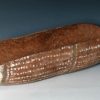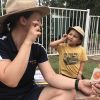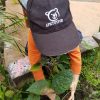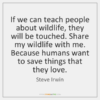![Weaving Weaving is so prevalent in so many countries and cultures from around the world. Weaving is a type of method in which many people use to make bags, utensils, mats, and an array of cultural creations. My first memory of weaving was as a young girl in an Italian family, my grandmother showing me how […]](https://www.kidsworldgilston.com/wp-content/uploads/2022/10/weaving.jpg)
Weaving is so prevalent in so many countries and cultures from around the world. Weaving is a type of method in which many people use to make bags, utensils, mats, and an array of cultural creations. My first memory of weaving was as a young girl in an Italian family, my grandmother showing me how to weave palms for ‘Palm Sunday’ during Easter celebrations. I loved sitting and creating works of art with the palms that we had.
My next memory was during school, how they encouraged us to practice measuring, cutting, and making several patterned pieces with Weaving. Many different materials are used to weave. Types of grasses and long bush plants, twine, vines, and textiles can be transformed into the most lavish of items. Some cultures use the method as a form of necessity in creating bags, water carriers and mats, and some are used more as an expression, such as the weaving of palms for Easter. Over the years, I’ve engaged in several experiences which have involved weaving. From weaving long fern/grass leaves to making woollen weaves for the children to collect and display nature from their adventures. During these times, I spend quite some time with the children in conversing, singing, and storytelling. It creates the perfect environment for a relaxed conversation all whilst practicing their coordination and fine motor abilities. The younger children seem to love the sensory aspect of the experience where they touch, grab, hold, pat, and sometimes taste the materials.
Some Benefits of Weaving are that it is Sustainable, the materials compostable, and it can be safely left to decompose. The effort and time to make these items usually takes some days up to a few weeks! Unlike our man-made textiles that is made by machines; woven items are made by hand. The materials used are also subjected to season and time of year.
During our open gates weeks here at Kids World Gilston, we have been fortunate to have several types of long leafed plants in which we could take several leaves, and the plants would grow back. We also discussed the importance of not taking too much from the environment. Through these discussions we can connect conversations in not taking more than we need and reducing
waste in our environments.
These experiences open a world of possibilities.
- Miss Josie




